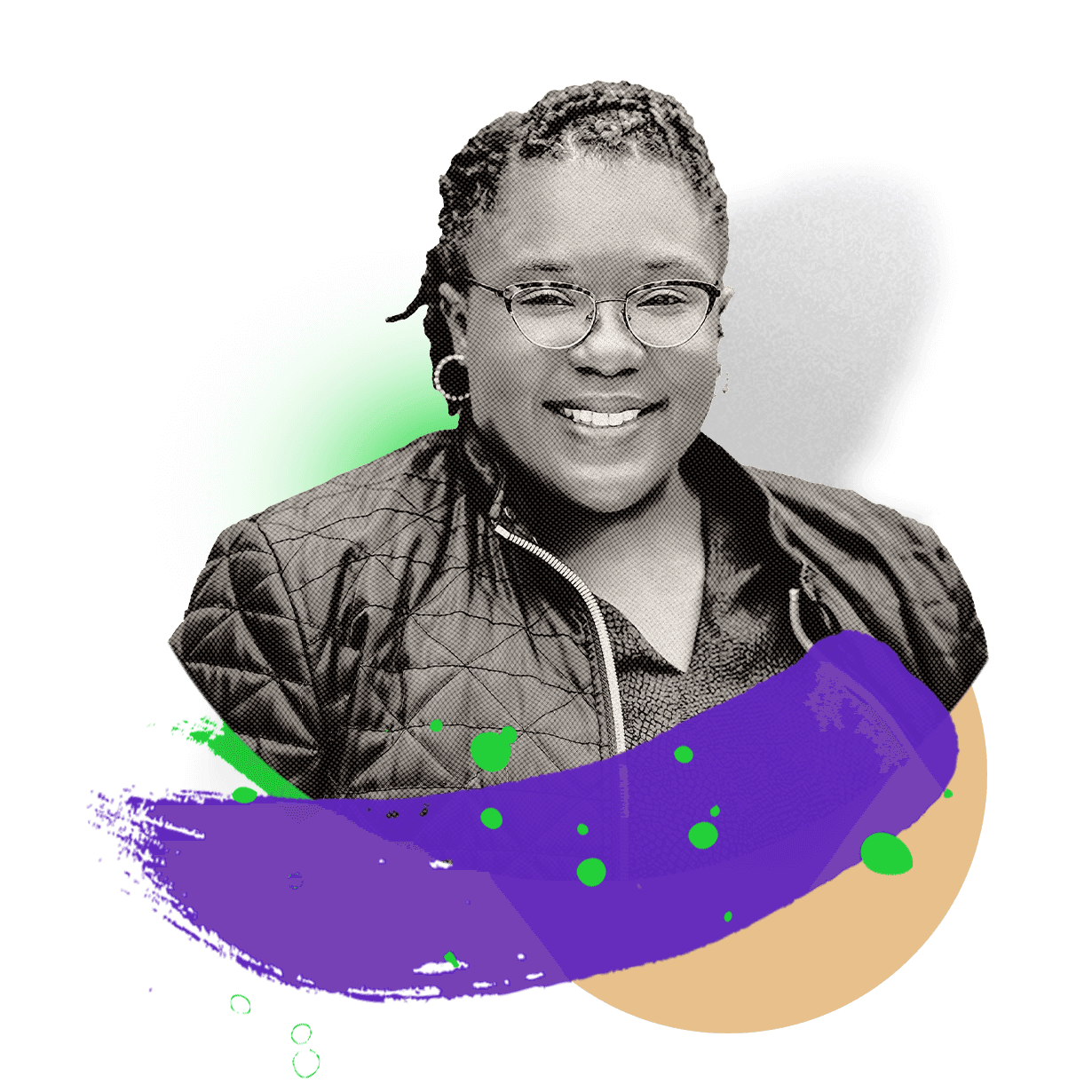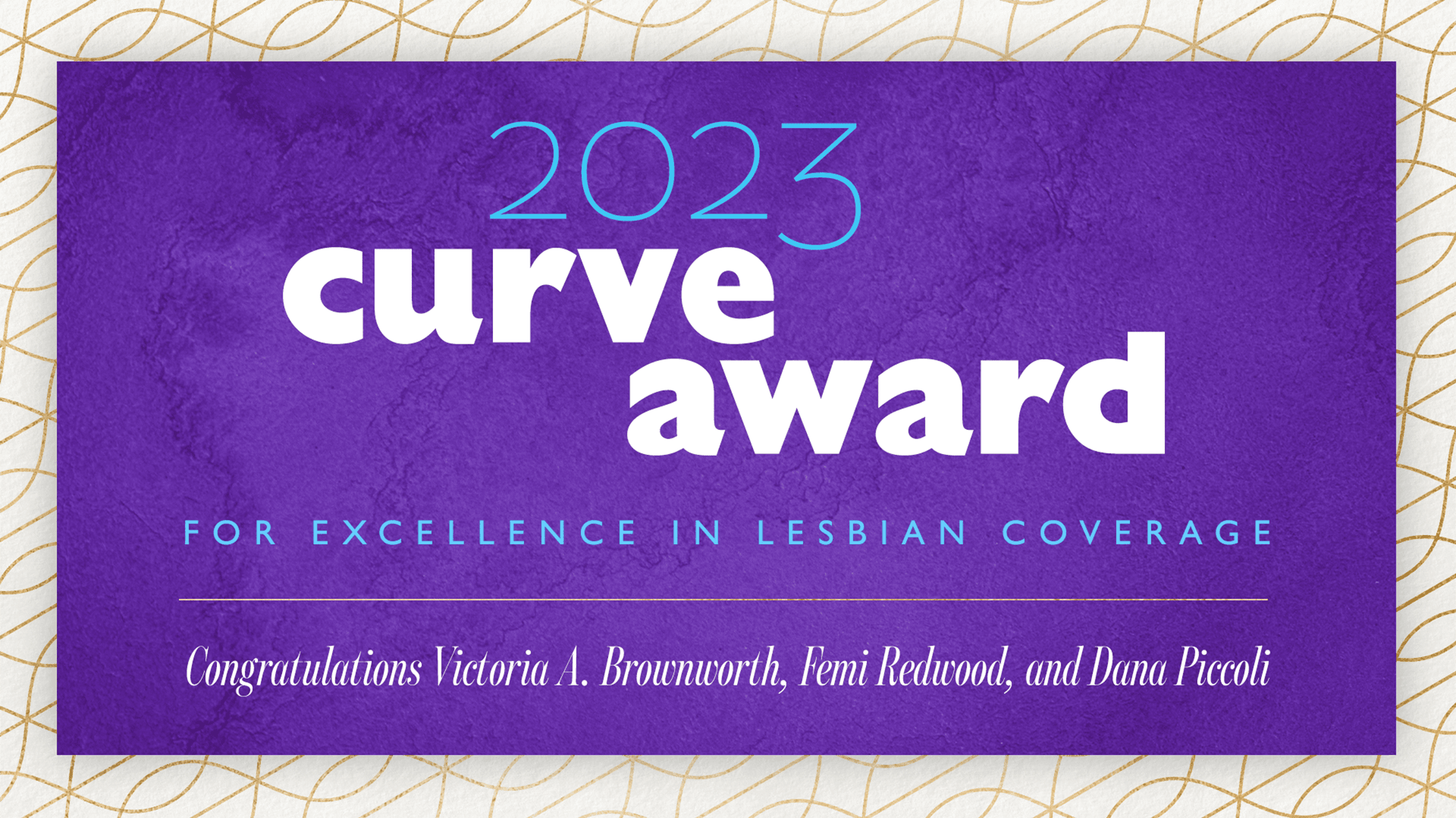From the desk of The Curve Foundation’s Executive Director, Jasmine Sudarkasa.
Throughout queer history, through the HIV/AIDS epidemic and the COVID-19 pandemic, lesbians have been in the business of making space: holding space, bearing witness, and interrupting harm on behalf of the LGBTQ+ community. To quote former Curve editor, Merryn Johns:
Lesbian journalism has always been about speaking truth to power, and insisting on our space in the culture, whatever and wherever we agree that to be.
The insistence is to see, and be seen, wielding visibility as a political act of witnessing and taking space. In this tradition, lesbian visibility is the emblem of our work at The Curve Foundation.
With the understanding that our stories are only as good as their stewards, our focus in our first two program years has been expanding the visibility and access of lesbian, queer, trans and non-binary journalists. Storytellers frame our understandings of each other; their ability to give each other grace and stand in a community’s most complex intersections only expands our collective ability to comprehend each other.
As we began planning this year’s Curve Award programming, inspired by this legacy of lesbian witness, we decided to focus new funds on journalists that have made our community what it is. Victoria A. Brownworth, long-term Curve political contributor and stalwart lesbian journalist, inspired us to envision a new award.
The 2023 Curve Award for Excellence in Lesbian Coverage is inspired by the solidarity and interdependence at the heart of lesbian publishing. In partnership with the National Association of LGBTQ+ Journalists (NLGJA) and a selection committee of lesbian and queer publishers embodying excellence across intersections, we are honored to congratulate this year’s winners:
Femi Redwood, Victoria A. Brownworth and Dana Piccoli
A Lesbian witness
This moment in lesbian journalism, from my seat, is a moment for a witness. A moment made possible, in large part, by the contributions of our selection committee:
Eboné Bell, Founding Editor and Publisher of Tagg Magazine
Carmen Phillips, Editor in Chief at Autostraddle
Merryn Johns, Former Editor in Chief of Curve Magazine, current Editor in Chief of QueerForty.com
Daisy Hernandez, Northwestern University professor, author and co-editor of Colonize This!
Franco Stevens, Founder & Publisher Emeritus of Curve Magazine
We saw in our grantmaking effort what that might look and feel like: five of the busiest women in queer publishing volunteered their time to listen to each other, advocate for their peers, and dream about excellence for the stories and storytellers that they love.
We were invited to consider the axis between passion and compassion: “Where is the sense of injustice,” Merryn asked. “How does a writer consider themselves in relation to the issue, and can they consider multiple positions? This is the mark of an excellent, compassionate journalist.” Daisy and Carmen emphasized that ‘no journalist stands alone,’ celebrating the communities that we always bring with us and encouraging us to think bigger about how we measure success.
And to the next phase of lesbian visibility? To the collective, in so many words, it is about being seen in our wholeness, for our differences, and allowing for the stories of lesbians to be told as a complete narrative of imperfect people. So often, marginalized people are convened for reconciliation and reactionary healing, but rarely are we then empowered with the tools and resources to act.
We learned from curating this participatory, lesbian space that negotiating power and truth is something that lesbian communities have always done, along solidarity lines that are long-standing. Each member of the selection committee pushed the group to consider more inclusive practice and tangible results – this is what keeps their publications alive. What philanthropic resources add to this alchemy is an opportunity to be agentic in their own healing, and this ability to make decisions and get shit done is the particular domain of lesbian stories and storytellers:
Coming from points of view that haven’t had light shined on them opens space for empathy, curiosity and inquisitiveness, and when done well, authentically shines a light on someone else. It’s also built on the back of activism, and is much more of a mindset of community work than is traditional in journalism. That is important.
— Carmen Phillips, Autostraddle
These are, after all, the moments that connect us to lesbian visibility – the moments that we can demonstrate solidarity as an act of witnessing, and of empathy, and take action to make others’ lives better.

